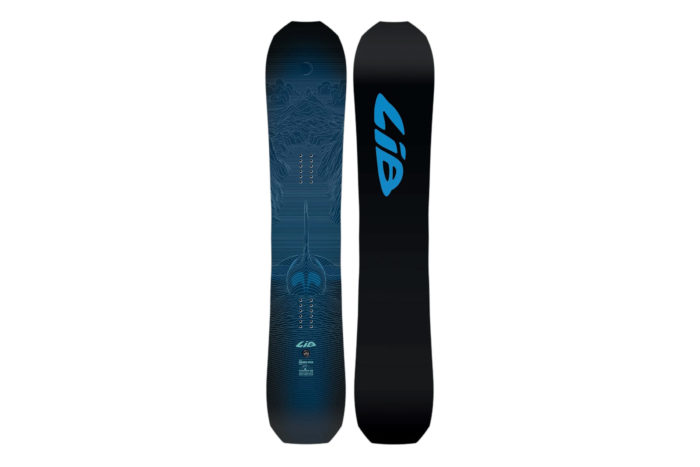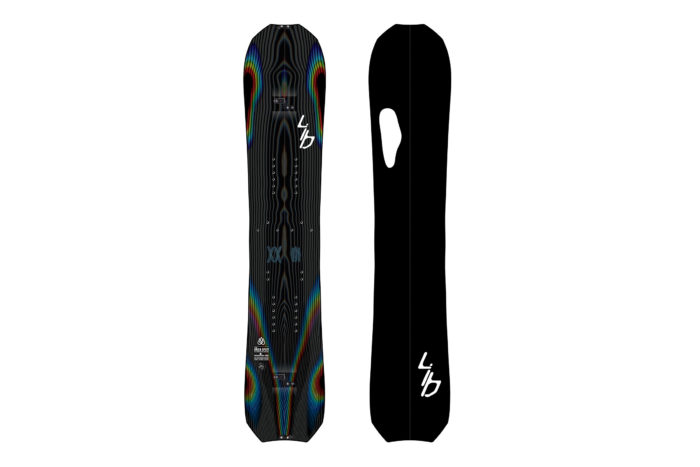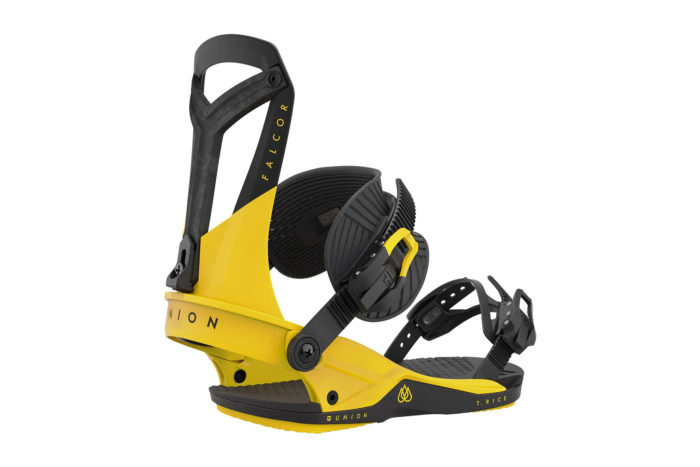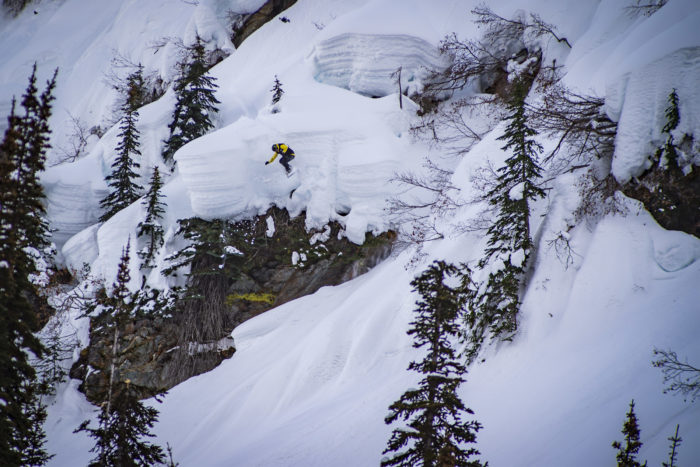Steep cliffs and pillows peppered the venue, a zone in Selkirk Tangiers Heli Skiing’s territory, so much so that Rice admitted it was barely contestable. The face was so spicy it felt like we’d gobbled a handful of habaneros just watching the livestream. (If you missed the Natural Selection event, check the highlights below.)
Twelve riders who duked it out in Revelstoke are now bound for the third and final stop of this year’s tour in Alaska. If it’s anything like last year’s finale in the Tordrillos, the Valdez, Alaska, stop in the next few days will be one for the books.
The event will stream after the fact in mid-April, but in the meantime, we’re nerding out on the gear the competitors used in Revelstoke — gear you’ll likely see gracing the snow again. What snowboards were Travis Rice and Zoi Sadowski-Synnott riding on their way to victory? What about the gear of their fellow competitors who joined them on the podium?
Given that much of this gear is now on sale, it’s a great time to add a board to your quiver, whether you’re using it this spring or prepping for next season.
Travis Rice’s Orca Quiver, Bindings, and More

Travis Rice has more pro models than just about any rider on the planet. Below, you’ll find a few killer shapes from his ever-evolving Orca quiver, including a couple that he’s employed throughout his Natural Selection campaign. We’ve also added a split that we love to ride when approaching backcountry with a freestyle-forward mentality.
Lib-Tech T. Rice Orca

The Orca ($700) is the patriarch of T. Rice’s pod of powdercraft. A volume-shifted directional shape that’s as buoyant as it is aggressive, the Orca is meant to be ridden 3-6 mm shorter than your normal board.
A GearJunkie tester who usually rides 158-160cm freeride boards, for instance, fell in love with the Orca 153 during a mind-bogglingly deep trip to Japan. There’s a ton of tech happening with this shape, but a few things make it one of our favorite powder boards of all time:
- Versatile, volume-shifted shape: The Orca has a cutaway nose and tail, tight sidecut, and fat waist. The board subsequently floats extremely well in deep stuff, but it also sports a low swing weight, making it maneuverable, quick, and perfect for popping through pillow lines like those in the Selkirks.
- Lib-Tech’s C2x camber profile: Some snowboarders poo-poo on rocker, but if it’s good enough for the G.O.A.T., it’s good enough for us. Thanks to the Orca’s rocker pocket in between the bindings, it’s easy to stomp on the back foot and surf through deep powder.
- Magne-Traction: Lib-Tech’s proprietary serrated edge tech, Magne-Traction refers to the bumps along the sidecut that help the Orca grip icy terrain. Not every day is a pillow-filled pow day, and the Orca can hang regardless of conditions.
- Whale Tail: The Orca’s tail is stiff, capable, and poppy. It can handle gnarly drops and Mach 10 groomer turns alike.
All told, we’re big fans of the Orca.
Lib-Tech Apex Orca

The Apex Orca ($960) is the same tried-and-true shape as the Orca but elevated thanks to a futuristic carbon construction. This beast sports an aspen, paulownia, balsa, and recycled PET bottle core. That’s all glassed in carbon, resulting in a snappier, more responsive, and lighter board. The price is high, but you get what you pay for. At least, according to Travis, who calls it a “sportscar” compared to the “daily driver” that is the original Orca.
Rumor has it this deck is being discontinued for 2024, so get it while you can (it’s still available online as of now). Another way to get it? Travis Rice is giving one away (via his and Natural Selection’s Instagram) during the next Natural Selection contest window (March 25-April 1). NST will announce the winner by April 2.
Lib-Tech Golden Orca

Rice threw down on the Golden Orca ($850) last year, leading to his Natural Selection Tour win. It’s a tweaked, narrower version of the Orca, and you can see that lineage in the shape of the broad, powder-gobbling nose.
The Golden Orca’s main divergence from the original Orca is in the tail. It’s still a kinked tail, but elongated, and much better for riding switch. Rice wanted to be able to land, take off, and rail turns switch, and he did just that on this shape. Because the Golden Orca is narrower but still a mid-wide shape, it’s only meant to be ridden 1-3 cm shorter than your normal board. Our tester who normally rides a 158-160 rode a 157 and loved it.
We’re big fans of the Golden Orca, and if we had to pick one of these shapes to ride every day, this would be it. It handles everything from groomers and choppy pow to puckering straightlines. Beanies off to T. Rice and the crew at Lib-Tech on this gilded killer whale.
Lib-Tech Orca Split

Of course, Rice isn’t using a split on the Natural Selection Tour, but not everyone gets to hop into a heli on the daily. If you like to earn your turns, look no further than the Orca Split ($960). We’ve toured with this board all over the Sierra and Wasatch mountains, and ride it frequently to this day.
While many splitboarders don’t like rockered profiles for touring (rocker underfoot makes it more difficult to edge into slippery skintracks), the Orca Split tours well on all but the slickest of sidehills. Any minor uphill deficiencies are worth it on the descent, where the Orca Split is an absolute dream. It can hang in deep stuff, hold an edge in hardpack, and encourages a playful, Natty Select-style approach to backcountry terrain.
Note: For sizing, the Orca Split specs are more closely related to the Golden Orca than the Orca. For reference, our tester who prefers 158-160cm freeride boards rides it in a 156.
Union Falcor

Union may make the best snowboard bindings on the market, and Rice’s pro model Falcor ($370) lives up to our highest expectations. The binding is built to Rice’s specs, with a cushioned yet responsive baseplate, boot-wrapping toe and ankle straps, and premium components.
Our favorite feature is the lightweight, forged carbon highback, which is minimalist in design, offers plenty of lateral flex for tweaking grabs, and still has enough backbone to ride fast and take chances. If we were a sommelier of snowboarding, we’d suggest pairing it with any of the Orcas, as well as theK2 Antidote ($600) and Capita Mega Merc ($919).
Quiksilver Highline Travis Rice Outerwear Jacket & Bibs

Rice has a few outerwear options at multiple price points with Quiksilver, but the Highline Pro ($620) is the top-of-the-line GORE-TEX shell he rocks most often in technical backcountry scenarios.
Thanks to exceptionally lightweight, waterproof, and breathable GORE-TEX Pro fabric, a clean design, and features like a helmet-compatible hood and powder skirt, the jacket is one of our favorite snowboarding shells for in and out of the resort. We also love the corresponding bib ($650) — the vest-like torso is comfortable with a pack, keeps out powder, and boasts a couple of pockets for serious storage.
Zoi Sadowski-Synnott’s Winning Gear

Just days before New Zealand’s Zoi Sadowski-Synnott (S-S) took home top honors in the Revelstoke backcountry, she got second place in slopestyle at the World Championships in Georgia. Jetlag be damned — she booked it halfway across the world and put on an absolute clinic at the most recent Natural Selection stop.
In an era dominated by specialists, S-S is an exceedingly rare breed of ATV. As she continues to collect hardware from manicured terrain parks and unruly backcountry venues alike, she cements her status as one of the best to ever do it. Yes, even though she’s only 22.
Through that lens, we’re witnessing history in the making every time she drops in. Here’s the gear she used to do just that in Revelstoke.
Burton X Natural Selection Hometown Hero

A freeride-meets-freestyle highlight of Burton’s unisex Family Tree line, the Hometown Hero ($660) is a shape of choice for several of the Burton team riders who compete on the Natural Selection Tour.
The directional deck has a rockered nose for float, a reliable, poppy section of camber underfoot, and a stiff, landing-lacerating tail. It’s nimble enough to sneak through icy glades in Burton’s Vermont backyard range thanks to a shorter sidecut and middling waist width. That said, it’s still built to handle heavy straightlines, too, with a mid-stiff flex and lightweight, carbon-reinforced construction. Factor in a twin flex and a middle-of-the-park taper, and this switch-slaying shred stick was the perfect board for Zoi in the deep snowpack of British Columbia.
While you can currently scoop up a Hometown Hero from Burton, the exact version that S-S was riding doesn’t exist yet. She was rocking a drool-inducing collaboration between the Natural Selection Tour and Burton.

The topsheet art is subtle: black-on-black line drawings that seem to touch on the same interstellar themes as T. Rice’s far-out board graphics, with “Natural Selection” stamped vertically down the nose in white. We’re not going to lie — we really freakin’ want one. Burton claims this collab will be hitting the digital streets sometime this April 2023.
Burton Lexa X EST

Burton’s Lexa is one of the most popular women’s snowboarding bindings on the planet, and for good reason, too — it’s a highly capable, responsive, and yet comfortable all-mountain crusher that pros and average joes alike love and trust.
A slightly stiffer, higher-end version of the Lexa is the Lexa X EST ($270), which is Zoi’s binding of choice no matter if she’s tackling a Natural Selection face or a slopestyle course. We’re big fans of the asymmetrical, ankle-cradling Hammock straps and overengineered toe straps — they keep the boot locked in place and they’re some of the best in the game.
Note: If you don’t ride a board with Burton’s Channel System, don’t get the EST model. Instead, go for the Lexa X Re:flex.
Burton Felix BOA

A stiff, high-performance women’s specific boot is notoriously hard to come by, but Burton’s Felix BOA ($420) ticks all the boxes. Dual BOA allows you to fine-tune fit and crank tightness to your liking, a polyurethane backstay gives the boot enough backbone to hang tough when hammering precipitous fall lines, and a mid-stiff tongue provides feedback when laying trenches toeside.
Powderhounds will love the heavily lugged Vibram sole, which offers excellent traction for in-bounds scrambles and backcountry bootpacks.
Honorable Mentions: More Podium-Worthy Snowboards

Blake Paul’s Gnu Hyper

The minimalist topsheet on Blake Paul’s Gnu Hyper ($600) reflects his style: understated, and undeniably graceful. But make no mistake, his Gnu pro model is a bona fide ripper. This directional shape sports a blunt, buoyant nose and stable yet surfy moontail, a camber-rocker-camber profile, minimal taper, and serrated Magne-Traction sidecut, with carbon bands boosting pop and responsiveness.
The result is as comfortable floating through Brighton’s blower pow as it is railing through a banked slalom course or laying trenches on groomers. All told, it’s an all-mountain board that excels in powder and an excellent quiver-killer for riders who appreciate a well-wrought turn as much as a floaty front three.
Dustin Craven’s Yes Standard Uninc

During his heat against Travis Rice, Dustin Craven stepped to pillow stacks that didn’t look remotely rideable. And yet, the Revelstoke local dissected them with surgical precision. His scalpel of choice? The Yes Standard Uninc ($650).
A mid-wide, mid-stiff deck with camber underfoot, the Standard Uninc has a couple of distinguishing features that make it an optimal shape for riders like Craven who crave a combo of float, freestyle prowess, and freeride response. First off, there’s zero taper, a symmetrical flex pattern, and a centered stance, meaning it rides switch and spins like a boss.
However, the nose has extra volume, ensuring pontoon-like performance in powder. Additionally, YES.’s idiosyncratic MidBite tech — an indent in the sidecut between the bindings — increases edge hold and boosts edge-to-edge agility without sacrificing float.
Elena Hight’s Jones Flagship

Elena Hight’s often riding the Jones Stratos, a surfy all-mountain shape we know and love, but she turned to the Flagship ($700) given the magnitude of the Revelstoke venue. The Tahoe native used the stiffer, dependable, hard-charging deck to drop some of the heaviest cliffs of the day and give Zoi S-S a run for her money in the finals.
Many specs and features of the Flagship are standard issue for freeride boards — rockered nose, camber underfoot, stiff flex, and so on. But, a couple of design elements do make it one of our all-time favorite freeride shapes. The progressive sidecut and Traction Tech (Jones’ serrated edge formula) provide reliability on rail and confidence in spicy terrain. While the contoured spoon-shaped nose and tail allow riders to roll smoothly and intuitively in and out of surfy turns.
Hailey Langland’s Nitro Karma

Just months after joining the Nitro team, Hailey Langland tapped the Karma ($549) for the Revelstoke stop of the NST. It was a solid choice, as the young ripper was able to display her suave style and freestyle skillset in Revy’s demanding pillow lines.
Thanks to a progressive sidecut and traditional camber profile, the Karma excels at railing turns and crushing banked slalom courses. Nitro outfitted this carving connoisseur with a mid-wide waist, too, enabling float and finesse in powder. Factor in a twin flex, powerful pop, and freestyle chops, and it’s no surprise why Langland instantly clicked with the Karma.
